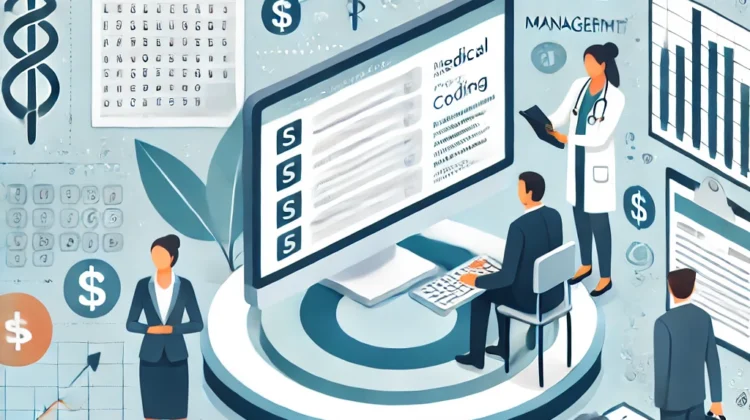
Coding and Revenue Cycle Management: The Backbone of Modern Healthcare
In today’s healthcare landscape, coding and revenue cycle management play a pivotal role in ensuring the financial stability of healthcare organizations while maintaining compliance with regulations. Accurate coding not only impacts revenue generation but also influences the overall efficiency of the revenue cycle. This blog explores the significance, challenges, and best practices of integrating coding into revenue cycle management, as provided by Medical Billing Master.
Understanding Coding and Revenue Cycle Management
At the core of healthcare operations, coding and revenue cycle management represent two interconnected processes essential for financial sustainability. Medical coding involves translating patient diagnoses, treatments, and procedures into universally recognized alphanumeric codes. These codes form the foundation of claims submitted to insurance providers, impacting the reimbursement process.
Revenue cycle management (RCM), on the other hand, encompasses the entire financial lifecycle of a patient encounter—from appointment scheduling to final payment collection. When coding and revenue cycle management work seamlessly, healthcare providers can optimize their cash flow, reduce claim denials, and ensure compliance with legal and regulatory standards.
The Importance of Coding in Revenue Cycle Management
Accurate Reimbursement Coding errors can lead to underpayments, overpayments, or claim denials, all of which disrupt the revenue cycle. Accurate coding ensures that healthcare providers are reimbursed for the services they provide, highlighting the inseparable link between coding and revenue cycle management.
Regulatory Compliance Compliance with coding guidelines, such as ICD-10 and CPT, is critical to avoiding penalties. Adhering to these standards ensures smooth claim processing and mitigates risks of audits, emphasizing the role of coding in revenue cycle management.
Improved Cash Flow Proper coding reduces the likelihood of claim denials and payment delays. This streamlines the revenue cycle and ensures consistent cash flow, underscoring the importance of coding in revenue cycle management.
Data Analytics and Reporting The data generated through coding supports analytics and reporting, helping organizations identify trends, forecast revenue, and improve operational efficiency. This is why coding and revenue cycle management must be aligned for data-driven decision-making.
Challenges in Coding and Revenue Cycle Management
Despite its importance, integrating coding and revenue cycle management is fraught with challenges. Here are some of the most common obstacles:
Frequent Regulatory Changes The ever-changing healthcare regulations, such as updates to ICD codes or new payer requirements, make it difficult to maintain coding accuracy. This directly affects revenue cycle efficiency.
Human Error Manual coding processes are prone to errors, leading to claim rejections and revenue losses. Errors in coding can disrupt the synchronization between coding and revenue cycle management.
Claim Denials Denials often result from incorrect or incomplete coding. Without a robust system for resolving denials, the revenue cycle suffers, illustrating the importance of accurate coding.
Lack of Training Many healthcare organizations struggle with a lack of trained coders who understand the complexities of coding and revenue cycle management. Continuous education is essential to keep up with industry changes.
Technology Integration The absence of advanced technology to automate and streamline processes can hinder the effectiveness of coding and revenue cycle management. Legacy systems often fail to support modern RCM practices.
Best Practices for Enhancing Coding and Revenue Cycle Management
To overcome these challenges, healthcare organizations should adopt the following best practices:
Invest in Training and Certification Continuous education and certification programs for coders ensure they stay updated with the latest coding standards and regulations. This enhances the accuracy of coding and revenue cycle management processes.
Leverage Technology Implementing advanced software solutions such as electronic health records (EHR) and coding automation tools can streamline workflows, reduce errors, and improve efficiency. Technology plays a crucial role in integrating coding and revenue cycle management seamlessly.
Conduct Regular Audits Regular coding audits identify errors, detect patterns, and prevent compliance risks. Audits help improve the alignment between coding and revenue cycle management by highlighting areas that need improvement.
Optimize Denial Management Establishing a robust denial management process ensures quick resolution of denied claims. This not only recovers lost revenue but also strengthens the link between coding and revenue cycle management.
Foster Interdepartmental Collaboration Effective communication between coders, billers, and other stakeholders is essential for minimizing errors and ensuring that coding and revenue cycle management work in harmony.
Monitor Key Performance Indicators (KPIs) Tracking KPIs such as denial rates, days in accounts receivable, and coding accuracy rates helps healthcare organizations measure the effectiveness of their coding and revenue cycle management strategies.
The Future of Coding and Revenue Cycle Management
The integration of advanced technologies like artificial intelligence (AI) and machine learning (ML) is transforming coding and revenue cycle management. Here are some emerging trends:
AI-Powered Coding Tools AI-driven solutions are capable of automating repetitive coding tasks, identifying patterns, and predicting errors. This not only enhances coding accuracy but also improves the efficiency of revenue cycle management.
Blockchain for Data Security Blockchain technology ensures the secure exchange of patient and billing data, reducing risks associated with fraud and data breaches. This technology can revolutionize the way coding and revenue cycle management handle sensitive information.
Predictive Analytics Predictive analytics tools help healthcare organizations forecast revenue trends, anticipate claim denials, and optimize the revenue cycle. These insights enhance decision-making in coding and revenue cycle management.
Telehealth Integration The rise of telehealth services has introduced new complexities in coding. Advanced systems are being developed to handle these challenges and integrate telehealth into coding and revenue cycle management workflows.
Cloud-Based Solutions Cloud-based platforms provide scalability, flexibility, and real-time access to coding and billing data. These solutions simplify the integration of coding and revenue cycle management across multiple locations.
Conclusion
The synergy between coding and revenue cycle management is indispensable for the financial health of healthcare organizations. Accurate coding ensures proper reimbursement, regulatory compliance, and operational efficiency, while robust revenue cycle management optimizes cash flow and reduces claim denials.
By investing in training, leveraging technology, and fostering collaboration, healthcare providers can overcome challenges and enhance their coding and revenue cycle management processes. As the industry evolves, embracing emerging technologies like AI, blockchain, and predictive analytics will further revolutionize this critical aspect of healthcare operations.
In the dynamic world of healthcare, the integration of coding and revenue cycle management will continue to be a cornerstone of success, driving both financial and operational excellence. Medical Billing Master is here to support your organization in navigating these complexities, ensuring optimal results in all aspects of coding and revenue cycle management.











